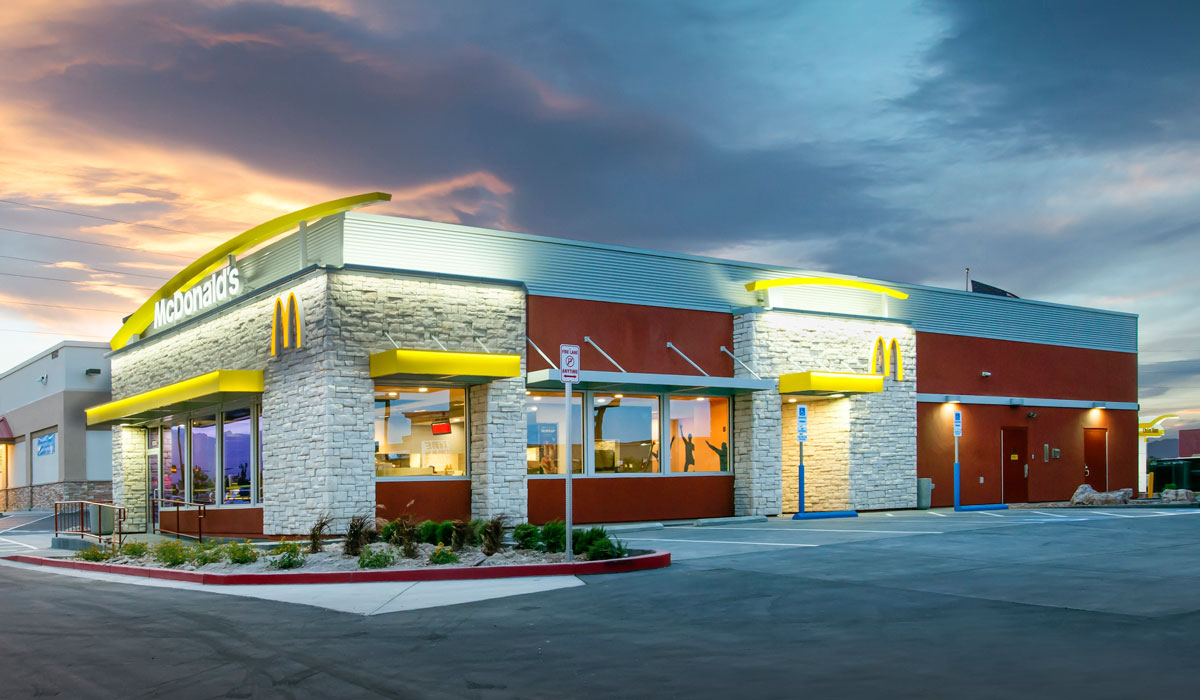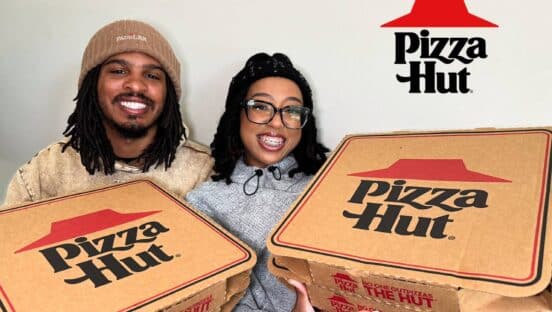McDonald’s announced Sunday that its board of directors has voted to fire chief executive officer Steve Easterbrook. The top earner fast food said in a release that he “demonstrated poor judgment involving a recent consensual relationship with an employee.”
Easterbrook sent an email to employees Sunday that read, “This was a mistake. Given the values of the company, I agree with the board that it is time for me to move on.”
Chris Kempczinski, previously serving as head of McDonald’s U.S. business, is stepping into the president and CEO role, effective immediately. He is also joining the chain’s board.
McDonald’s did not provide further details about the relationship or what personal conduct policy Easterbrook violated.
A LOOK BACK
A deep dive into Steve Easterbrook’s plan to fix McDonald’s
Why McDonald’s tech strategy should alert competitors
McDonald’s delivery to hit $4B in sales
Joe Erlinger, the company’s president of international operated markets, was named U.S. president to replace Kempczinski.
Easterbrook took McDonald’s CEO reins in March 25, succeeding Don Thompson. That May, he unveiled a 23-minute online video outlining McDonald’s “Turnaround Plan,” following six consecutive quarters of declining sales.
Born in England, Easterbrook worked up the McDonald’s ranks before he spent nearly five years heading the company’s U.K. and Europe division. He then left McDonald’s for two separate CEO stints—first at Pizza Express, then at Wagamama, both U.K.-based restaurant companies—before rejoining McDonald’s in 2013.
During Easterbrook’s tenure, McDonald’s stock has nearly doubled in value. The company’s global same-store sales gains of 5.9 percent in the third quarter that ended September 30 marked 17 consecutive periods of global gains. While U.S. traffic has stagnated, McDonald’s has been able to grow top-line performance through higher checks and digital expansion. Domestic comps lifted 4.8 percent in Q3, driven by product mix changes (two-thirds) and menu pricing (one-third as domestic pricing was up nearly 3 percent). Traffic remained negative.
The brand’s delivery sales are expected to hit $4 billion this year, roughly 4 percent of its global business, and four times what it was just three years ago.
Rebecca Thornley-Gibson, a partner at city law firm DMH Stallard, said in an email that Easterbrook’s lofty position likely created the conflict. “Most individuals spend more time at work with colleagues than with friends and family and therefore it’s not surprising that many people find themselves in a personal relationship of some kind with a colleague,” she said. “Most of the time this won’t create issues and employers won’t interfere with the relationship. However, where there is a relationship that involves one of the individuals holding the balance of power in the workplace relationship, e.g. manager/supervisor/board member, then conflict issues are more likely to arise.”
“If one of the parties in the relationship is responsible for the other’s appraisals, pay reviews, promotion opportunities and even work allocation, then there is danger of favoritism and from team members, perceived bias,” she added. “There may also be issues where the more junior employee feels as though they cannot say no to amorous advances and this creates a real risk of later sexual harassment claims against the manager and employer.
Easterbrook’s “Velocity Growth Plan” has also centered on Experience of the Future redesigns, global restructuring, refranchising, and the continued development of technology-forward innovation, like McDonald’s recent $300 million deal to acquire decision logic company Dynamic Yield. At the time (late March), the deal represented McDonald’s first sizable purchase since buying Boston Market for $173.5 million two decades ago.
“Chris takes the reins of this great company at a time of strong, sustained performance, and the board has every confidence that he is the best leader to set the vision and drive the plans for the company’s continued success,” Enrique Hernandez Jr., chairman of McDonald’s board of directors, said in a statement.
Hernandez added Kempczinski was instrumental in the development of the McDonald’s strategic plan, which “has overseen the most comprehensive transformation of the U.S. business in McDonald’s history.”
McDonald’s turnaround hasn’t come without kickback. U.S. franchisees have gone back and forth with corporate, even creating their first independent franchisee group in 2018, the National Owners Association.
Cost issues have ranged from the EOTF upgrades, which feature digital-ordering kiosks, fresh beef, and value menu structures, like the $1 $2 $3 Dollar Menu. McDonald’s has since slowed the pace of its remodel efforts and introduced more flexibility at the co-op level in regards to promotions, especially around breakfast.
McDonald’s converted 1,500 stores so far this year to the EOTF design and expects to complete 2,000 by year’s end, including all corporate units.
Previously, McDonald’s said it would remodel 12,000 restaurants by the end of 2019 and most of its 14,000 domestic stores by 2020. It extended the timeline to 2022. During one 90-day Q2 stretch last year, McDonald’s converted 1,300 restaurants—about 10 per day.
Remodel costs range from $160,000–$750,000. The higher end accounts for those locations that have to tear down and rebuild. About 95 percent of McDonald’s U.S. stores are run by franchisees.
Easterbrook said in Q3 that “average franchisee restaurant cash flow is moving in the right direction with 11 consecutive months of cash flow growth through September. We expect this trend to continue through the rest of 2019.”
Kempczinski told The Wall Street Journal Sunday that the company would maintain Easterbrook’s focus on technology. “There isn’t going to be some radical, strategic shift. The plan is working,” he said.
McDonald’s has worked with franchisees on other cost initiatives, too, and Kempczinski said that dialogue would continue. The chain worked to remove complexity from its operations in recent months, like cutting Signature Crafted burgers, offering All-Day Breakfast flexibility, scaling back late-night options, and restructuring its corporate to 10 field offices from 21, and reducing co-ops from 180-plus to 56 in the U.S.
This was done so McDonald’s could make sure it was providing the right level of support to franchisees, it said. Eliminating the region structure in favor of field offices and removing layers from the field organization allowed McDonald’s to increase resources in strategic areas, such as technology. It also boosted efficiency by creating a single point of contact to help franchisees build business plans and obtain the corporate resources they need. Another proposed benefit: Improving speed-to-market by managing complexity and improving decision making, the company said.
McDonald’s also said in March it would offer more autonomy to operators on which products it wanted to slot into the $1 $2 $3 Dollar Menu tiers. Each co-op in McDonald’s system is required to have a $1 any size drink and $2 small McCafe drink. But the rest is now effectively up to local co-ops to determine at the ground level what works and what doesn’t when it comes to value.
Additionally, Kempczinski told the WSJ that McDonald’s has a responsibility to address workplace well-being—something the company has come under fire from labor organizers in recent months. The push has been around harassment claims and pushing minimum wage up to $15 an hour.
McDonald’s said it’s bolstered training practices and protocol over the past year. Easterbrook noted in May that McDonald’s was training employees to deal with harassment, and starting a hotline for victims. He said the company was committed “to ensuring a harassment and bias-free workplace.”
McDonald’s started working with anti-abuse organization RAINN in 2018 and Easterbrook said then that 90 percent of operators and general managers have taken the new training course. And it will offer training to other crew members on harassment, unconscious bias, and workplace safety.
“McDonald’s makes a difference in the lives of people every day. We have a responsibility not only to serve great food, but to make it responsibly and to enrich the communities in which we operate,” Kempczinski said Sunday. “I am energized by this challenge and look forward to guiding McDonald’s continued success.”
McDonald’s said it will disclose Kempczinski’s and Easterbrook’s pay in a filing by Tuesday.
Easterbrook collected a total of $21.8 million in 2017 ($9.1 million in incentive-based pay). He then received $15.9 million in total compensation last year.






